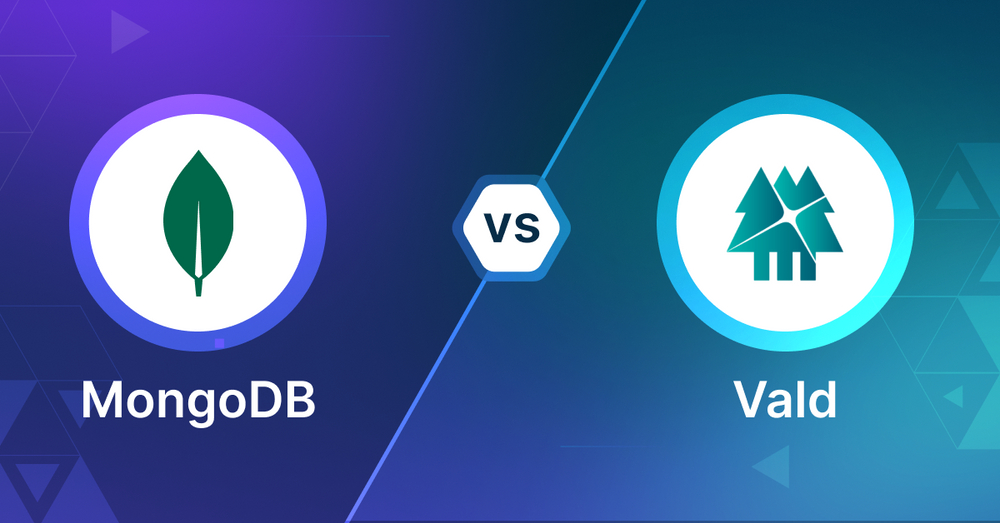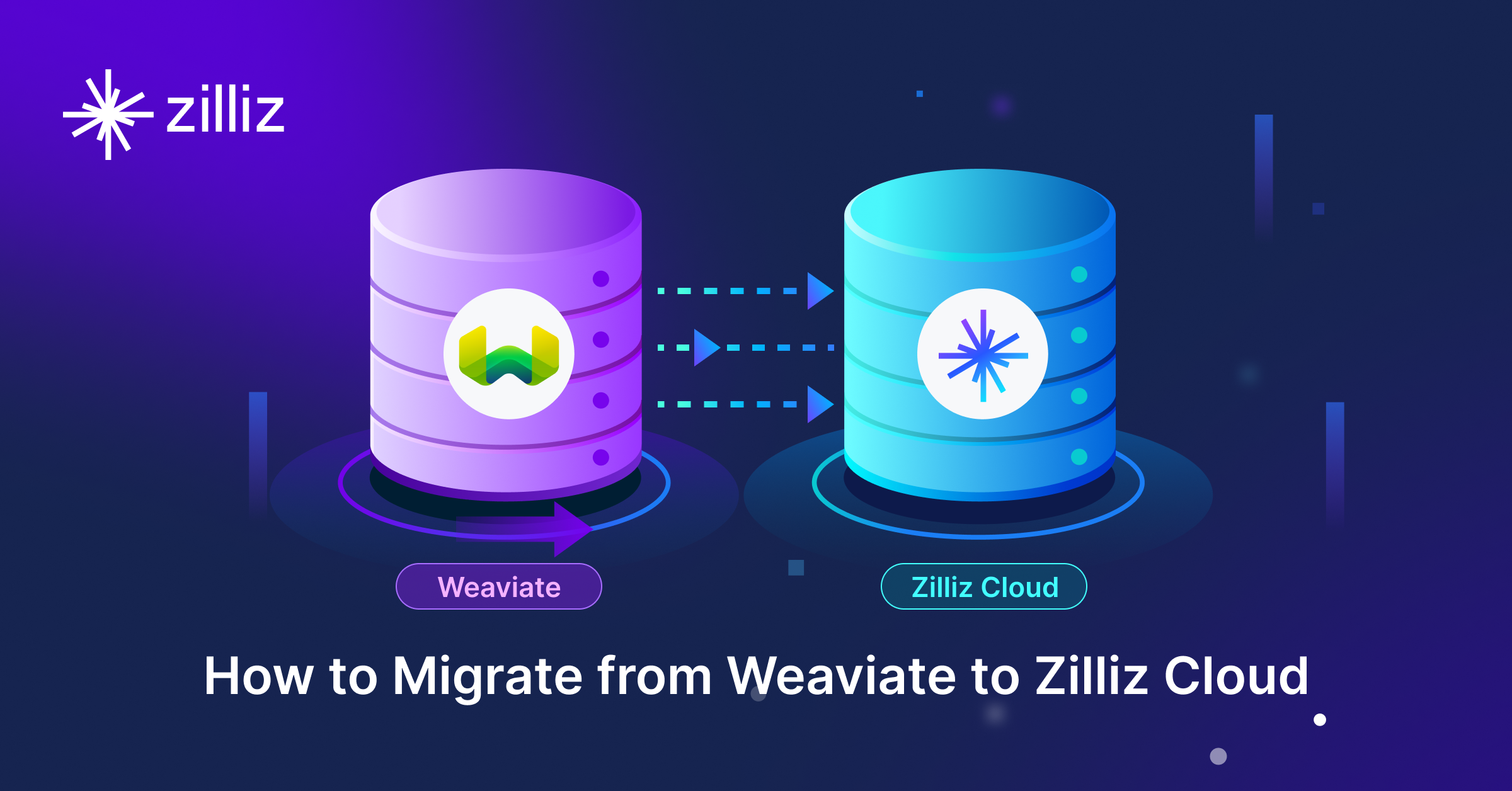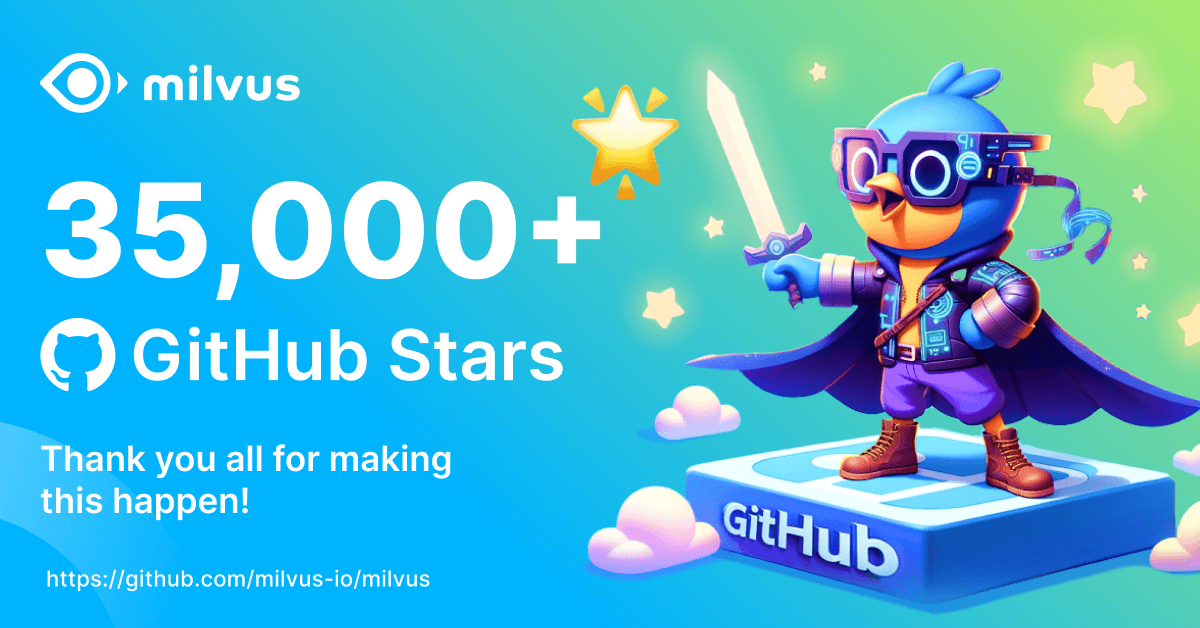MongoDB vs Vald: Selecting the Right Database for GenAI Applications

As AI-driven applications evolve, the importance of vector search capabilities in supporting these advancements cannot be overstated. This blog post will discuss two prominent databases with vector search capabilities: MongoDB and Vald. Each provides robust capabilities for handling vector search, an essential feature for applications such as recommendation engines, image retrieval, and semantic search. Our goal is to provide developers and engineers with a clear comparison, aiding in the decision of which database best aligns with their specific requirements.
What is a Vector Database?
Before we compare MongoDB vs Vald, let's first explore the concept of vector databases.
A vector database is specifically designed to store and query high-dimensional vectors, which are numerical representations of unstructured data. These vectors encode complex information, such as the semantic meaning of text, the visual features of images, or product attributes. By enabling efficient similarity searches, vector databases play a pivotal role in AI applications, allowing for more advanced data analysis and retrieval.
Common use cases for vector databases include e-commerce product recommendations, content discovery platforms, anomaly detection in cybersecurity, medical image analysis, and natural language processing (NLP) tasks. They also play a crucial role in Retrieval Augmented Generation (RAG), a technique that enhances the performance of large language models (LLMs) by providing external knowledge to reduce issues like AI hallucinations.
There are many types of vector databases available in the market, including:
- Purpose-built vector databases such as Milvus, Zilliz Cloud (fully managed Milvus)
- Vector search libraries such as Faiss and Annoy.
- Lightweight vector databases such as Chroma and Milvus Lite.
- Traditional databases with vector search add-ons capable of performing small-scale vector searches.
MongoDB is a NoSQL database with vector search as an add-on. Vald is a purpose-built vector database. This post compares their vector search capabilities.
MongoDB: The Basics
MongoDB Atlas Vector Search is a feature that allows you to do vector similarity searches on data stored in MongoDB Atlas. You can index and query high-dimensional vector embeddings along with your document data and do AI and machine learning right in the database.
At its core, Atlas Vector Search uses the Hierarchical Navigable Small World (HNSW) algorithm for indexing and searching vector data. This creates a multi-level graph of the vector space so you can do Approximate Nearest Neighbor (ANN) searches. It’s a balance of speed and accuracy for large scale vector search. Atlas Vector Search also supports Exact Nearest Neighbors (ENN) searches which prioritizes accuracy over performance for queries of up to 10,000 documents.
One of the big advantages of Atlas Vector Search is its integration with MongoDB’s flexible document model. You can store vector embeddings along with other document data so you can search more contextually and precisely. You can query any kind of data that can be embedded up to 4096 dimensions. Atlas Vector Search allows you to combine vector similarity searches with traditional document filtering. For example, a semantic search for products could be filtered by category, price range or availability.
Atlas Vector Search also supports hybrid search, combining vector search with full text search for more granular results. This is different from Atlas Search which is focused on keyword based search. The platform integrates with popular AI services and tools so you can use it with embedding models from providers like OpenAI, VoyageAI and many others listed on Hugging Face. It also supports open-source frameworks like LangChain and LlamaIndex for building applications that use Large Language Models (LLMs).
To ensure scalability and performance, MongoDB Atlas provides Search Nodes, which provides dedicated infrastructure for Atlas Search and Vector Search workloads. This allows you to have optimized compute resources and independent scaling of search needs so you get better performance at scale.
By having these capabilities in the MongoDB ecosystem, Atlas Vector Search is a full solution for developers building AI powered applications, recommendation systems or advanced search features. No need for a separate vector database, you can use MongoDB’s scalability and rich features along with vector search.
Vald: The Basics
Vald is a powerful tool for searching through huge amounts of vector data really fast. It's built to handle billions of vectors and can easily grow as your needs get bigger. The cool thing about Vald is that it uses a super quick algorithm called NGT to find similar vectors.
One of Vald's best features is how it handles indexing. Usually, when you're building an index, everything has to stop. But Vald is smart - it spreads the index across different machines, so searches can keep happening even while the index is being updated. Plus, Vald automatically backs up your index data, so you don't have to worry about losing everything if something goes wrong.
Vald is great at fitting into different setups. You can customize how data goes in and out, making it work well with gRPC. It's also built to run smoothly in the cloud, so you can easily add more computing power or memory when you need it. Vald spreads your data across multiple machines, which helps it handle huge amounts of information.
Another neat trick Vald has is index replication. It stores copies of each index on different machines. This means if one machine has a problem, your searches can still work fine. Vald automatically balances these copies, so you don't have to worry about it. All of this makes Vald a solid choice for developers who need to search through tons of vector data quickly and reliably.
Key Differences
When choosing between MongoDB Atlas Vector Search and Vald for your vector search needs you need to understand the differences. Both offer powerful vector data handling but have different approaches and strengths. Let’s compare them across several key areas to help you make a decision.
Search Methodology
MongoDB Atlas Vector Search uses the Hierarchical Navigable Small World (HNSW) algorithm for indexing and searching vector data. This creates a multi level graph of the vector space for Approximate Nearest Neighbor (ANN) searches. It also supports Exact Nearest Neighbors (ENN) searches for smaller datasets.
Vald uses the NGT algorithm for fast vector similarity searches. This is designed to handle billions of vectors.
Data Handling
MongoDB integrates vector search with its flexible document model. You can store vector embeddings alongside other document data and do more contextual and precise searches. You can combine vector similarity searches with document filtering and even do hybrid searches that merge vector and full-text search.
Vald is focused on vector data and is designed to handle massive amounts of it. While it may not have the same flexibility for non-vector data as MongoDB, it’s pure vector search is unbeatable.
Scalability and Performance
MongoDB Atlas has dedicated Search Nodes for Vector Search workloads so you can scale search resources independently of your data and search needs.
Vald is designed to be scalable from the ground up. It spreads indexing across multiple machines, so you can do searches during index updates. Vald’s distributed architecture can handle billions of vectors and scale horizontally as needed.
Flexibility and Customization
MongoDB’s document model is very flexible in data modeling and querying. You can store and query vectors up to 4096 dimensions and combine vector searches with other query types.
Vald has customization options for data input and output and good gRPC support. While it may not have the same data modeling flexibility as MongoDB it’s pure vector search is unbeatable.
Integration and Ecosystem
MongoDB Atlas Vector Search integrates with the broader MongoDB ecosystem. It works well with popular AI services and tools, including embedding models from OpenAI and frameworks like LangChain and LlamaIndex.
Vald is designed to work in cloud and can integrate with other systems through its data handlers. But it may not have as big an ecosystem as MongoDB.
Ease of Use
MongoDB has extensive documentation and a big community so it’s easier to learn and use. If you already know MongoDB adding vector search might be a no brainer.
Vald is powerful but may have a steeper learning curve especially if you’re new to vector databases. But it’s focused on vector search so it might be simpler for your use case.
Cost
MongoDB Atlas is a managed service so it simplifies operations but may cost more. Pricing varies based on your usage and requirements.
Vald is open-source so it’s cheaper but you’ll need to factor in the cost of running and maintaining the infrastructure yourself.
Security
MongoDB Atlas has robust security features including encryption, authentication and fine grained access control which extends to vector search.
Vald’s security is dependent on your implementation and the infrastructure you surround it with.
When to Use Each
Use MongoDB Atlas Vector Search when you need a solution that combines vector search with document databases. It’s great for applications that require contextual searches where you need to consider both vector similarity and other document attributes. MongoDB is good when you have mixed data types, need to do hybrid searches or want to leverage the full MongoDB ecosystem. Use MongoDB when you’re building AI powered applications, recommendation systems or advanced search features that need to work with your existing MongoDB data.
Vald is the choice when your primary requirement is high performance vector search at scale. It’s great for applications that have billions of vectors and need fast, efficient similarity searches. Vald is good when you need continuous indexing without interrupting search operations or when you need a system that can scale horizontally across multiple machines. Use Vald when you’re building large scale image or video search engines, content recommendation systems or any application where pure vector search performance is the top priority.
Conclusion
MongoDB Atlas Vector Search is a full solution that combines vector search with a flexible document database and a rich ecosystem and hybrid search options. Vald is high performance vector search for massive scale and continuous indexing. Your choice between these should be based on your use case, the type of data you’re working with and your performance requirements. If you need a database that can handle both vector and non-vector data with strong ecosystem support, MongoDB might be the way to go. If you’re focused on high speed vector search at scale and comfortable with managing your own infrastructure, Vald might be the better choice. Consider your existing tech stack, team expertise and future scalability needs when you decide.
Read this to get an overview of MongoDB and Vald but to evaluate these you need to evaluate based on your use case. One tool that can help with that is VectorDBBench, an open-source benchmarking tool for vector database comparison. In the end, thorough benchmarking with your own datasets and query patterns will be key to making a decision between these two powerful but different approaches to vector search in distributed database systems.
Using Open-source VectorDBBench to Evaluate and Compare Vector Databases on Your Own
VectorDBBench is an open-source benchmarking tool for users who need high-performance data storage and retrieval systems, especially vector databases. This tool allows users to test and compare different vector database systems like Milvus and Zilliz Cloud (the managed Milvus) using their own datasets and find the one that fits their use cases. With VectorDBBench, users can make decisions based on actual vector database performance rather than marketing claims or hearsay.
VectorDBBench is written in Python and licensed under the MIT open-source license, meaning anyone can freely use, modify, and distribute it. The tool is actively maintained by a community of developers committed to improving its features and performance.
Download VectorDBBench from its GitHub repository to reproduce our benchmark results or obtain performance results on your own datasets.
Take a quick look at the performance of mainstream vector databases on the VectorDBBench Leaderboard.
Read the following blogs to learn more about vector database evaluation.
Further Resources about VectorDB, GenAI, and ML
- What is a Vector Database?
- MongoDB: The Basics
- Vald: The Basics
- Key Differences
- When to Use Each
- Conclusion
- Using Open-source VectorDBBench to Evaluate and Compare Vector Databases on Your Own
- Further Resources about VectorDB, GenAI, and ML
Content
Start Free, Scale Easily
Try the fully-managed vector database built for your GenAI applications.
Try Zilliz Cloud for FreeKeep Reading

Why Teams Are Migrating from Weaviate to Zilliz Cloud — and How to Do It Seamlessly
Explore how Milvus scales for large datasets and complex queries with advanced features, and discover how to migrate from Weaviate to Zilliz Cloud.

Our Journey to 35K+ GitHub Stars: The Real Story of Building Milvus from Scratch
Join us in celebrating Milvus, the vector database that hit 35.5K stars on GitHub. Discover our story and how we’re making AI solutions easier for developers.

Empowering Innovation: Highlights from the Women in AI RAG Hackathon
Over the course of the day, teams built working RAG-powered applications using the Milvus vector database—many of them solving real-world problems in healthcare, legal access, sustainability, and more—all within just a few hours.
The Definitive Guide to Choosing a Vector Database
Overwhelmed by all the options? Learn key features to look for & how to evaluate with your own data. Choose with confidence.